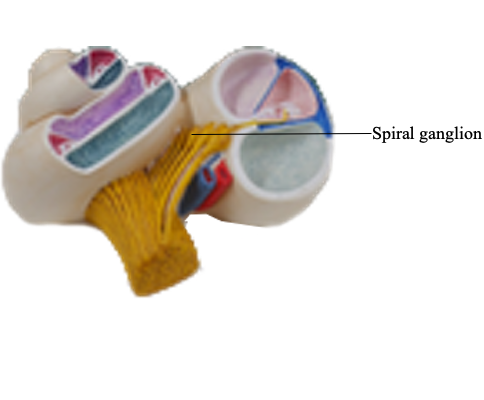Main Model

General view of the cochlear : Spiral ganglion

Vestibulocochlear Nerve (CN VIII)
Functions
Special sensory (special somatic afferent) - that
is, special sensations of hearing, equilibrium, and motion
(acceleration/deceleration).
Nuclei
Vestibular nuclei are located at the junction of
the pons and medulla in the lateral part of the floor of the 4th ventricle; the cochlear nuclei, anterior and posterior, are in
the medulla.
The vestibulocochlear nerve (CN VIII) emerges from
the junction of the pons and medulla and enters the internal
acoustic meatus. Here it separates into the
vestibular and cochlear nerves.
• The vestibular nerve is composed of the central processes of bipolar neurons in the vestibular ganglion. The peripheral processes of the neurons extend to the
maculae of the utricle and saccule (sensitive to linear
acceleration and the pull of gravity relative to the position of the head) and to the cristae of the ampullae of the
semicircular ducts (sensitive to rotational acceleration).
• The cochlear nerve is composed of the central processes
of bipolar neurons in the spiral ganglion; the peripheral
processes of the neurons extend to the spiral organ for the
sense of hearing.
Within the internal acoustic meatus, the two divisions of CN
VIII are accompanied by the primary root and intermediate
nerve of CN VII and the labyrinthine artery.